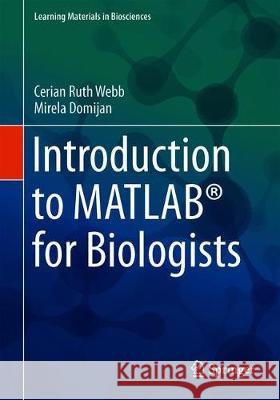Introduction to Matlab(r) for Biologists » książka
topmenu
Introduction to Matlab(r) for Biologists
ISBN-13: 9783030213367 / Angielski / Miękka / 2019 / 175 str.
Kategorie BISAC:
Wydawca:
Springer
Seria wydawnicza:
Język:
Angielski
ISBN-13:
9783030213367
Rok wydania:
2019
Dostępne języki:
Numer serii:
000801585
Ilość stron:
175
Waga:
0.43 kg
Wymiary:
24.13 x 17.78 x 1.27
Oprawa:
Miękka











